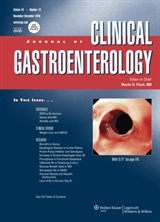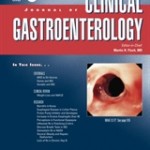 Functional gastrointestinal disorders, a group of functional conditions characterised by the presence of symptoms attributable to the mid or lower gastrointestinal tract, include functional abdominal bloating, which is dominated by a feeling of abdominal fullness or bloating without sufficient criteria for another functional gastrointestinal disorder.
Functional gastrointestinal disorders, a group of functional conditions characterised by the presence of symptoms attributable to the mid or lower gastrointestinal tract, include functional abdominal bloating, which is dominated by a feeling of abdominal fullness or bloating without sufficient criteria for another functional gastrointestinal disorder.
Diagnostic criteria are the presence, for at least 12 weeks, that need not be consecutive, in the preceding 12 months of;
- A feeling of abdominal fullness, bloating, or visible distension; and
- Insufficient criteria for a diagnosis of functional dyspepsia, IBS, or other functional disorders.[1]
The Role of Probiotics in Reducing Bloating[2]
A therapeutic approach to functional abdominal bloating is represented by the administration of probiotics to modify the composition of colonic flora and thus the production of intestinal gas. The question is, which probiotic should I use? Among the many different strains available, Lactobacillus rhamnosus of the GG strain (LGG) was shown to attach to intestinal cells, to colonise the human intestinal tract, to be acid and bile resistant, and to produce antimicrobial substances.[3]
A clinical trial studied the effect of LGG in patients affected by functional abdominal bloating in a double-blind, randomised, crossover protocol.[4] Nineteen patients according to Rome II criteria underwent two courses of therapy with LGG or placebo, with a 10-day interval. Hydrogen breath test after the administration of 12 g lactulose and a visual analog line were performed to evaluate intestinal gas production capacity and severity of symptoms.
As far as bloating was concerned, the administration of both LGG and placebo induced a significant reduction of symptom severity with respect to basal values, with the improvement after LGG treatment being significantly higher than that induced by placebo.
Moreover, the improvement of bloating occurred in 17 of 19 patients after LGG, whereas it occurred in only 8 of 19 patients after placebo. On the contrary, only LGG but not placebo significantly improved the severity of flatulence. This effect was evident in 13 of 19 patients after LGG and in 7 of 19 after placebo.
Dosage Recommendations
Take 1-3 LGG in divided doses with food for at least 4-6 weeks or until bloating has been resolved.
References
[1] Thompson WG, Longstreth GF, Drossman DA, et al. Functional bowel disorders and functional abdominal pain. Gut. 1999;45:43-47. View Abstract
[2] M Di Stefano, E Miceli, E Armellini, A Missanelli, and GR Corazza Probiotics and functional abdominal bloating. J Clin Gastroenterol, Jul 2004; 38(6 Suppl): S102-3 View Abstract
[3] Gorbach SL. Probiotics and gastrointestinal health. Am J Gastroenterol. 2000;95:S1–S4. View Abstract
[4] Miceli E, Missanelli A, Mazzocchi S, et al. Efficacia del Lactobacillus GG nel trattamento del gonfiore addominale funzionale. Argoment Gastroenterol Clin.





